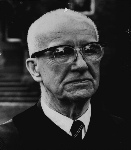

Normally, you would see an ad here. Maybe you are using an ad blocker. I respect that, but this site relies on revenue from ads to continue. Maybe as an alternative you would consider making a donation on the Contribute page.
Normally, you would see an ad here. Maybe you are using an ad blocker. I respect that, but this site relies on revenue from ads to continue. Maybe as an alternative you would consider making a donation on the Contribute page.
Copyright © Sirius Publishing 2006-2019

Making Models
So, we are building a model model of human awareness. It is not the ‘real thing’ whatever the ‘real thing’ turns out to be, this is simply a model. By model we do not mean, say, a model plane, an Airfix model, perhaps a Spitfire. That model looks a little bit like a real Spitfire but it’s not made out of metal and it doesn’t fly, but it gives you some idea of what a real spitfire plane looks like.
The model we will be creating is nothing like a toy plane. You can’t pick it up. You can’t turn it around in your hands and you can’t hang it from the ceiling. This model is far more abstract than that. It is simply a way of picturing something; a way of getting your head around a certain set of ideas without it actually being the same as those ideas. It is a model of human awareness.
We are aware of our physical surroundings. We are aware of our bodies. We are aware of our emotions and we are aware of our thoughts. Crucially for our modeling, we are not going to get into any discussion about whether something is actual or imagined. If something enters our awareness, then it is ‘real’ for us and we can model it. This is a model of our awareness not ‘reality’ whatever that is. This is a model of what we can be aware of and be pretty sure that other people can experience similarly. We are certainly not going to get into any philosophical discussions about the nature of reality.
This model is much more like a weather forecast. Weather forecasts are based on models of air pressure and air currents, the spin of the earth and it’s geography and hundreds of other factors that are all turned into equations crunched together a billion times a second in super computers to get a prediction of the coming weather. We see this on TV as Icons showing wind speed, clouds, rain and sunny spells, but none of these are the same as actual clouds or actual rain. Of course they are not the same, which is stating the obvious, but this becomes less obvious when we are to deal with models of awareness. Our model may involve icons representing the process of awareness a way perhaps of picturing thoughts floating across the mind like clouds floating across a weather map. In either case it is just a model, a way of picturing a process, hopefully an accurate picture.
Imagine a mighty steam engine used to power a factory now when you look at these machines in museums they can be hugely impressive. They may be considered great feats of Engineering. Beautiful in their design. Magnificent in the precision of the pieces; unconsidered works of art in their own right. But discussions about the beauty of an engine are trivial. What is important is that the machine works, it has a function. All it’s parts were put together with one intention, to provide power. You only see the worth of the machine when steam energy is converted into movement and the engine starts to work.
It is the same with the model. We build the model from separate parts, but they operate as a whole. It is only when this is whole model is ‘energized’ and begins to crank up and operate that it’s true worth can be shown. The point of this model building is not to impress with its elegance, or amaze with its grandeur, but realise a blueprint for the Wholly Human.
Richard Buckminster "Bucky" Fuller 1895 – 1983

"Bucky" Fuller was an American architect, systems theorist, author, designer, and inventor.
Fuller published more than 30 books, coining or popularizing terms such as "Spaceship Earth", ephemeralization, and synergetic. He also developed numerous inventions, mainly architectural designs, and popularized the widely known geodesic dome. Carbon molecules known as fullerenes were later named by scientists for their structural and mathematical resemblance to geodesic spheres.
Fuller was the second World President of Mensa from 1974 to 1983.